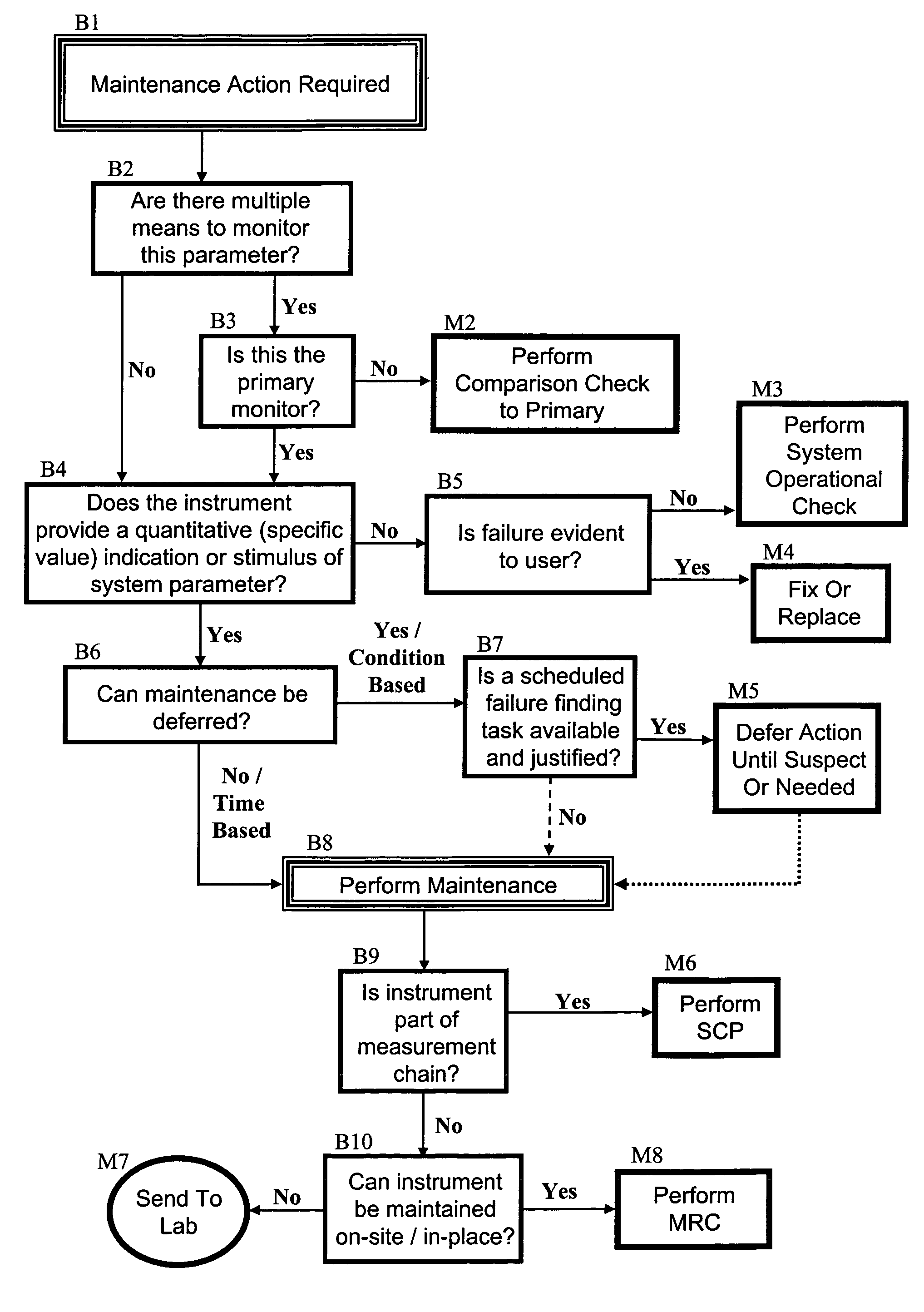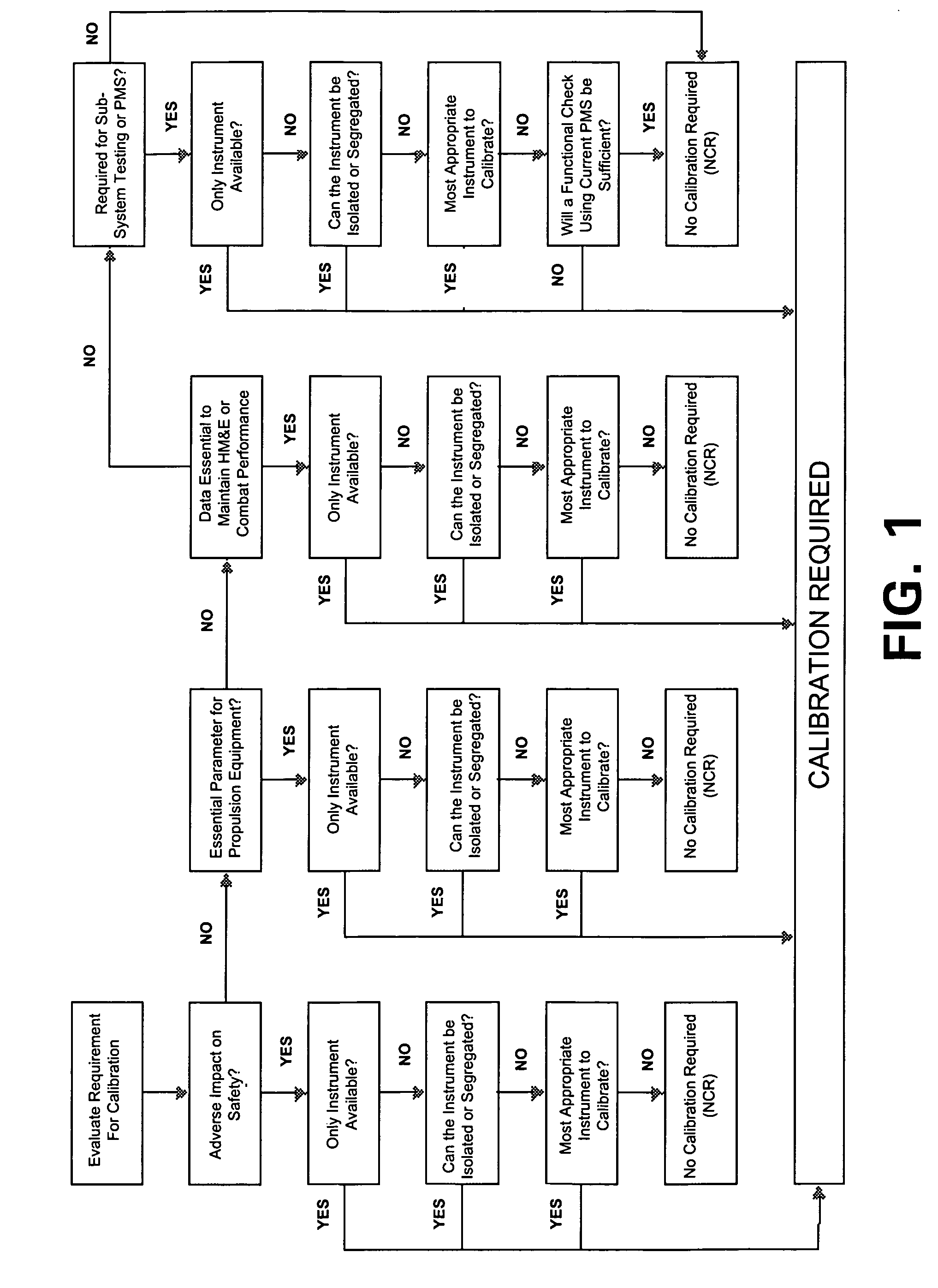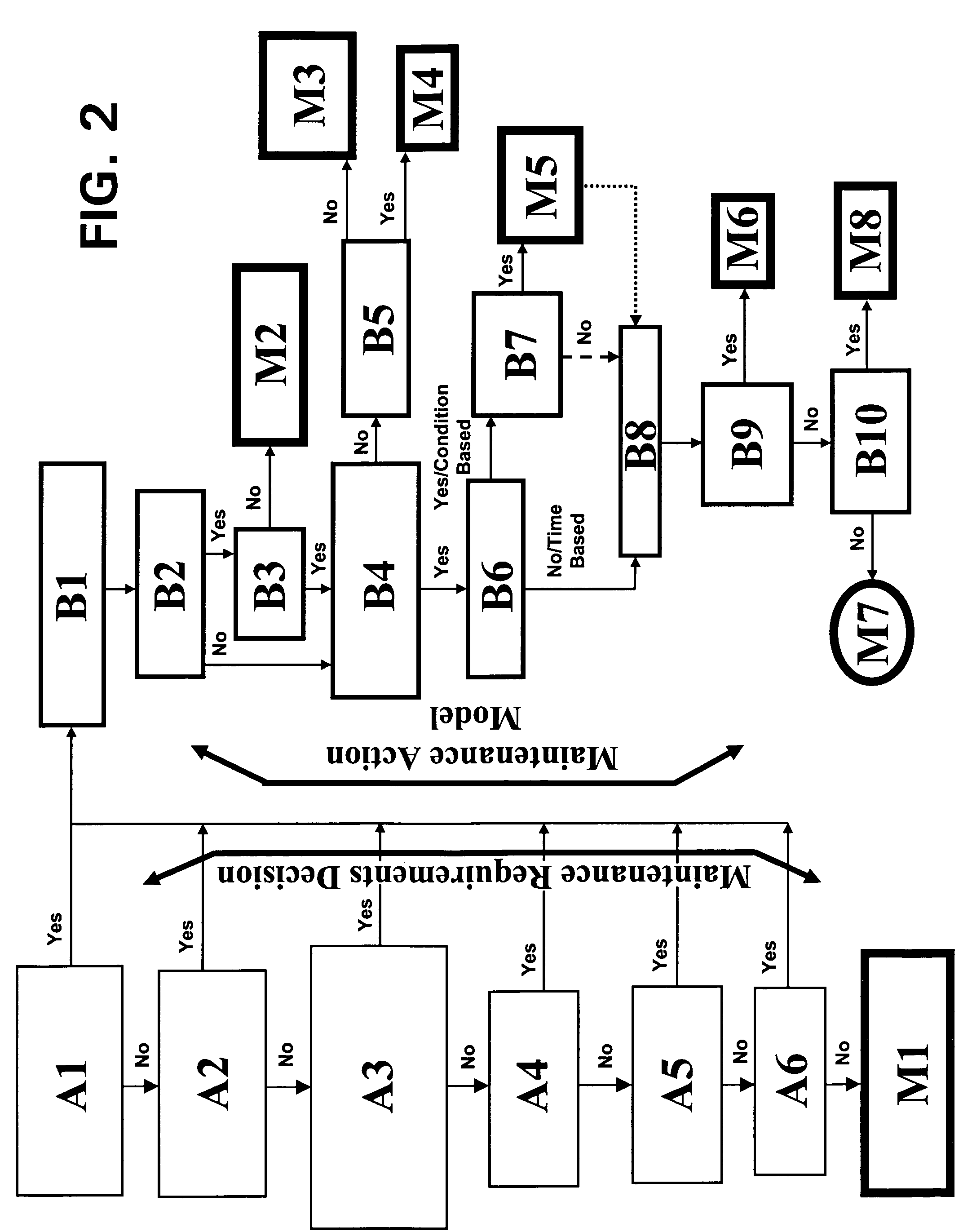Installed instrumentation maintenance method
a technology for installing instruments and maintenance methods, applied in the field of devices, to achieve the effect of uniformly reducing calibration and maintenance requirements and reducing expenses
- Summary
- Abstract
- Description
- Claims
- Application Information
AI Technical Summary
Benefits of technology
Problems solved by technology
Method used
Image
Examples
Embodiment Construction
[0020]Referring now to FIG. 1, the U.S. Navy currently implements an instrument maintenance strategy that separates calibration aspects from other maintenance-related aspects. The logic tree shown in FIG. 1 is the aforementioned duplicate of the “Calibration Decision Logic Tree” published in the Joint Fleet Maintenance Manual (JFFM, CINCLANTFLT / CINCPACFLTINST 4790.3) at Volume VI, Chapter 9, Appendix B-1. The U.S. Navy's currently conducts instrument calibration requirements analysis through its SISCAL Program, which uses a logic tree very similar to that shown in FIG. 1. As previously noted herein, the JFFM's Calibration Decision Logic Tree fails to effectuate reliability-centered maintenance (RCM) principles.
[0021]Reference is now made to FIG. 2 through FIG. 6, which are informative regarding the present invention. FIG. 2 through FIG. 4 illustrate the decision tree logic for a typical embodiment in accordance with the present invention. FIG. 2 is re-represented in two parts as FIG...
PUM
 Login to View More
Login to View More Abstract
Description
Claims
Application Information
 Login to View More
Login to View More - R&D
- Intellectual Property
- Life Sciences
- Materials
- Tech Scout
- Unparalleled Data Quality
- Higher Quality Content
- 60% Fewer Hallucinations
Browse by: Latest US Patents, China's latest patents, Technical Efficacy Thesaurus, Application Domain, Technology Topic, Popular Technical Reports.
© 2025 PatSnap. All rights reserved.Legal|Privacy policy|Modern Slavery Act Transparency Statement|Sitemap|About US| Contact US: help@patsnap.com



